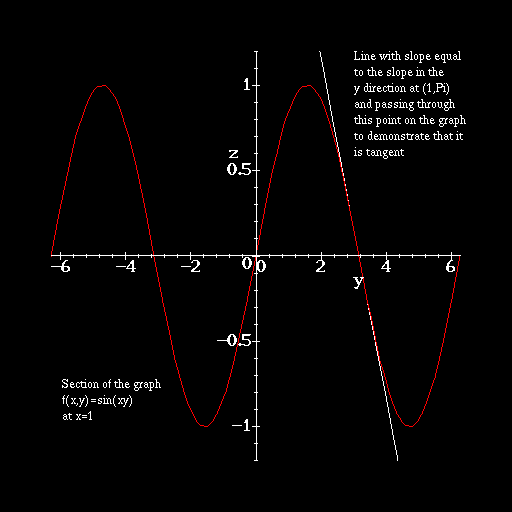For a start we'll look at the function z = f(x,y) one variable at a time. As you remember, this means we are looking at sections of the surface z = f(x,y) that have either x or y fixed at a constant value. Let's start by checking out the sections with x = c, so that z = f(c,y). We now have a function of one variable, y. Thus, the slope of this function at a point is known from one variable calculus to be the derivative with respect to y. In other words,
![]()
For example, if ![]() then the slope in the y direction is
simply
then the slope in the y direction is
simply ![]() by using the chain rule.
Note that since x = c is fixed, we can compute the derivative just as if
c were a fixed number. At the point
by using the chain rule.
Note that since x = c is fixed, we can compute the derivative just as if
c were a fixed number. At the point ![]() the slope is -1.
Graphically, this is shown below.
the slope is -1.
Graphically, this is shown below.

As another example, we can compute the slope in the x direction of z = 3x2 + 2xy + 4y2 at the point (1,0). The slope is
![]()
Just as in one variable calculus, a positive slope at a point indicates that the function is increasing at that point. A negative slope indicates a decreasing function, and a zero slope indicates that the function is flat. The function above, z = 3x2 + 2xy + 4y2 has slope 6x + 2c in the x direction along the section y = c. Thus, for x > -c/3 the function is increasing; at x = -c/3, the function is flat; and forx < -c/3 the function is decreasing.